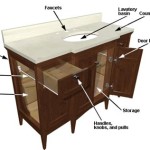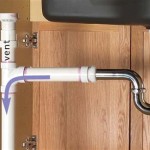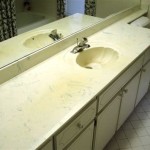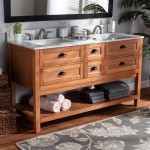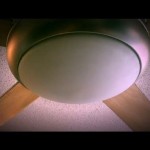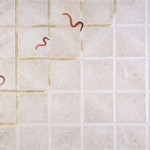How To Get Rid Of Ants In Bathroom Drain
Ants in the bathroom, particularly around the drain, are a common nuisance. These tiny insects are often drawn to moisture and potential food sources found within the plumbing system. Addressing an ant infestation in a bathroom drain requires a multi-faceted approach, including identifying the ant species, locating the nest, and implementing targeted elimination methods. It is crucial to understand the reasons for their presence and address these underlying causes to prevent future recurrences.
The appearance of ants in a bathroom drain usually signifies one of two things: a nearby food source or a water source. Bathroom drains can accumulate organic matter such as hair, soap scum, and toothpaste residue. These materials, when combined with moisture, become an attractive food source for certain ant species. Additionally, leaks in pipes, consistently damp conditions, or even condensation can provide the necessary moisture for ants to thrive and establish a nest close by. Identifying and eliminating these attractants is the primary step toward effective ant control in this environment.
The lifecycle of ants is an important consideration when addressing an infestation. Ants live in colonies, and their behavior is dictated by a complex social structure. Worker ants are the ones typically seen foraging for food and water, while the queen ant is responsible for reproduction. Simply eliminating the visible worker ants will not resolve the problem; the colony will continue to replenish the population. Therefore, the strategy must focus on reaching and eliminating the colony itself or preventing worker ants from accessing the bathroom in the first place.
Identifying the Ant Species
Before attempting any extermination methods, accurately identifying the species of ant infesting the bathroom is crucial. Different ant species have varying preferences and behaviors, influencing the effectiveness of different control methods. Common ant species found in bathrooms include:
- Sugar Ants: These ants are attracted to sugary substances and are often found near food sources or sweet residues in drains. They are typically small and dark in color.
- Pavement Ants: These ants nest under pavement and can enter buildings through cracks in foundations or around pipes. They are typically dark brown or black.
- Carpenter Ants: While carpenter ants are known for nesting in wood, they can also be drawn to bathrooms in search of moisture. They are larger than other common household ants and can be black or reddish-brown. Their presence can indicate a potential moisture problem or wood rot within the bathroom structure.
- Odorous House Ants: These ants emit a distinct, unpleasant odor when crushed. They are attracted to both sweet and greasy substances and are often found near drains or food preparation areas.
Careful observation of the ants' physical characteristics and behavior will help in identifying the species. This information can then be used to select the most appropriate treatment methods. For instance, baiting strategies may be more effective for sugar ants and odorous house ants, while addressing moisture issues is critical for carpenter ants.
Locating the Ant Nest
Eliminating the visible ants is only a temporary solution if the nest remains undisturbed. Finding the nest is crucial for achieving long-term ant control. Ant nests can be located in various places, both inside and outside the bathroom:
- Behind Walls: Ants often nest within wall voids, especially near plumbing pipes where moisture is present.
- Under Floors: If there are cracks or spaces under the bathroom floor, ants may establish a nest there.
- In Cabinets: Ants may nest in cabinets, particularly those that are damp or contain food residue.
- Outside the House: Ants may nest outside the house and enter the bathroom through cracks, crevices, or around pipes.
To locate the nest, follow the trail of ants back to their entry point. Observe where they are traveling from and where they are carrying food or water. Carefully inspect the areas mentioned above for signs of ant activity, such as piles of dirt, frass (insect waste), or live ants. Once the nest is located, direct treatment can be applied. If the nest is inaccessible, baiting strategies can be employed to allow the ants to carry the poison back to the colony.
Implementing Targeted Elimination Methods
Once the ant species is identified and a potential nest location is identified, the appropriate elimination methods can be implemented. Several options are available, ranging from natural remedies to chemical treatments. The choice of method depends on the severity of the infestation, the preferences of the homeowner, and the safety considerations for pets and children.
Natural Remedies:
- Boiling Water: Pouring boiling water down the drain can kill ants on contact. This method is most effective for small infestations or as a preventative measure. Exercise caution when using boiling water, as it can damage some types of plumbing.
- Vinegar: White vinegar is a natural cleaner and disinfectant that can kill ants and disrupt their scent trails. Pouring a cup of vinegar down the drain and letting it sit for several hours can help eliminate ants and prevent them from returning.
- Baking Soda and Vinegar: A mixture of baking soda and vinegar creates a fizzing action that can help dislodge debris and kill ants in the drain. Pour a cup of baking soda down the drain, followed by a cup of vinegar. Let it sit for 30 minutes, then flush with hot water.
- Borax and Sugar: Borax is a natural insecticide, and sugar attracts ants. Mix equal parts borax and sugar with water to create a paste. Place the paste near the drain, allowing the ants to carry it back to the colony.
- Diatomaceous Earth (DE): DE is a natural powder made from fossilized algae. It is non-toxic to humans and pets but lethal to insects. Sprinkle DE around the drain and other areas where ants are present. The sharp edges of the DE will cut through the ants' exoskeletons, causing them to dehydrate and die.
Chemical Treatments:
- Ant Baits: Ant baits contain a slow-acting poison that ants carry back to the colony, eventually killing the queen and other members. Place ant baits near the drain and other areas where ants are present. Choose a bait that is specifically formulated for the type of ant infesting the bathroom.
- Insecticides: Insecticides can be used to kill ants on contact. However, they should be used with caution, as they can be harmful to humans and pets. Always follow the manufacturer's instructions carefully. Spray insecticides around the drain and other areas where ants are present.
- Drain Cleaners: Some drain cleaners contain chemicals that can kill ants. However, these chemicals can also be harmful to plumbing and the environment. Use drain cleaners sparingly and follow the manufacturer's instructions carefully.
Prevention is Key:
- Keep the Bathroom Clean: Regularly clean the bathroom to remove food residue, soap scum, and other attractants for ants.
- Repair Leaks: Fix any leaks in pipes or faucets to eliminate moisture sources.
- Seal Cracks and Crevices: Seal any cracks or crevices in walls, floors, and cabinets to prevent ants from entering the bathroom.
- Ventilate the Bathroom: Ensure that the bathroom is well-ventilated to prevent moisture buildup.
- Use Drain Screens: Install drain screens to prevent hair and other debris from accumulating in the drain.
Addressing an ant infestation in a bathroom drain requires a comprehensive approach that includes identifying the ant species, locating the nest, and implementing targeted elimination methods. By addressing the underlying causes and implementing preventative measures, a homeowner can effectively eliminate ants from the bathroom and prevent future infestations.
The selection of remedial action must consider the long-term impact. While immediate eradication is desirable, ensuring the method does not introduce other environmental concerns is paramount. For instance, the excessive use of chemical insecticides may solve the ant problem but could introduce harmful contaminants into the water system or the living space. Similarly, using abrasive cleaning agents can damage pipes and create further opportunities for pest intrusion. Therefore, a balanced, informed approach is essential.
Regular maintenance is also vital for preventing future ant infestations. This includes routinely cleaning the drains with natural solutions like vinegar and baking soda, inspecting plumbing for leaks, and sealing any potential entry points. By adopting a proactive approach to bathroom hygiene, homeowners can significantly reduce the likelihood of attracting ants and other pests. The frequency of these maintenance activities should be determined based on the specific conditions of the bathroom, such as its usage level and the climate in which it is located.

Boise Idaho Pest Control Pestcom

How To Get Rid Of Ants In Bathroom Drain City Pests

Boise Idaho Pest Control Pestcom

How To Stop Ants From Invading Your Bathroom Identification And Prevention Tips Tabor Pest Control

How To Get Rid Of Ants In Bathroom Drain City Pests

11 Simple Ideas To Kill Ants In The Bathroom

Niagara Pest Control Why Are There Carpenter Ants In The Bathroom

How To Get Rid Of Ants In The Bathroom 2024 24h Pest Pros

How To Get Rid Of Ants In The Bathroom Synergy²

8 Tips On How To Get Rid Of Ants In The Bathroom Sink Kitchen
Related Posts

